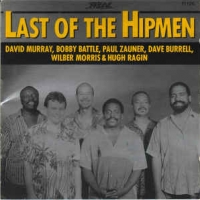The best component is no component at all - thinking aloud
I'm very much enjoying my current pre-less state, in contradiction to some other members' experiences. I should say right away that I'm not seeking to set up an argument here, I'm just thinking aloud.
Listening this evening, I'm reminded of one of the basic principles by which the amps I use were designed - 'the best component' is no component at all'.
It works for me. The digital volume control in Audirvana+ is doing the business, even if it's a little clumsy.
All this has got me thinking some more about how to reduce that component count further, and I'm led into thinking some more about my currently stalled Open Baffle project. A wide-range OB without a cross-over or with a very simple one would seem to be the way to go.

Comments
I would like to hear some big Magneplanar speakers, big electrostatic panel and a large cone driver for the bass. I imagine that must be pretty visceral, and it seems a simple way to incorporate the best of a well regarded technology with the strengths of another. Speakers will always be the variable with systems, however good sources get.
Losing boxes also allows for consolidation with better quality. These Dynaudios are for studio use; they have amps and DACs built in.
These do 24/192 BTW.
They now have a domestic version, which incorporates wireless streaming (at 16/48 IIRC):
Thing is, these solutions are not simple in the slightest, technologically they are pretty complex. As a result, some of us might not like their sound. But for the end user, this must be attractive. Perhaps the future will look a bit like this? - A different kind of 'simple'.
Now, the issue is: How to reconcile this 'apple-esque' user experience with 'real' high quality audio?
Perhaps losing the speaker box, along with its interaction with the mechanical energy produced by the cone movement, is what yields the benefits?
IME mixing driver technologies like that only brings the worst of both worlds, with lack of integration.
These still have the same building blocks as in a separates rig, but they're in the speaker box rather than on a rack. Indeed, the individual parts of the Dynaudios may not be designed with any eye to minimalism.Precisely - they are minimal to the user bit probably not inside. It would be great to see the two ways in one system.